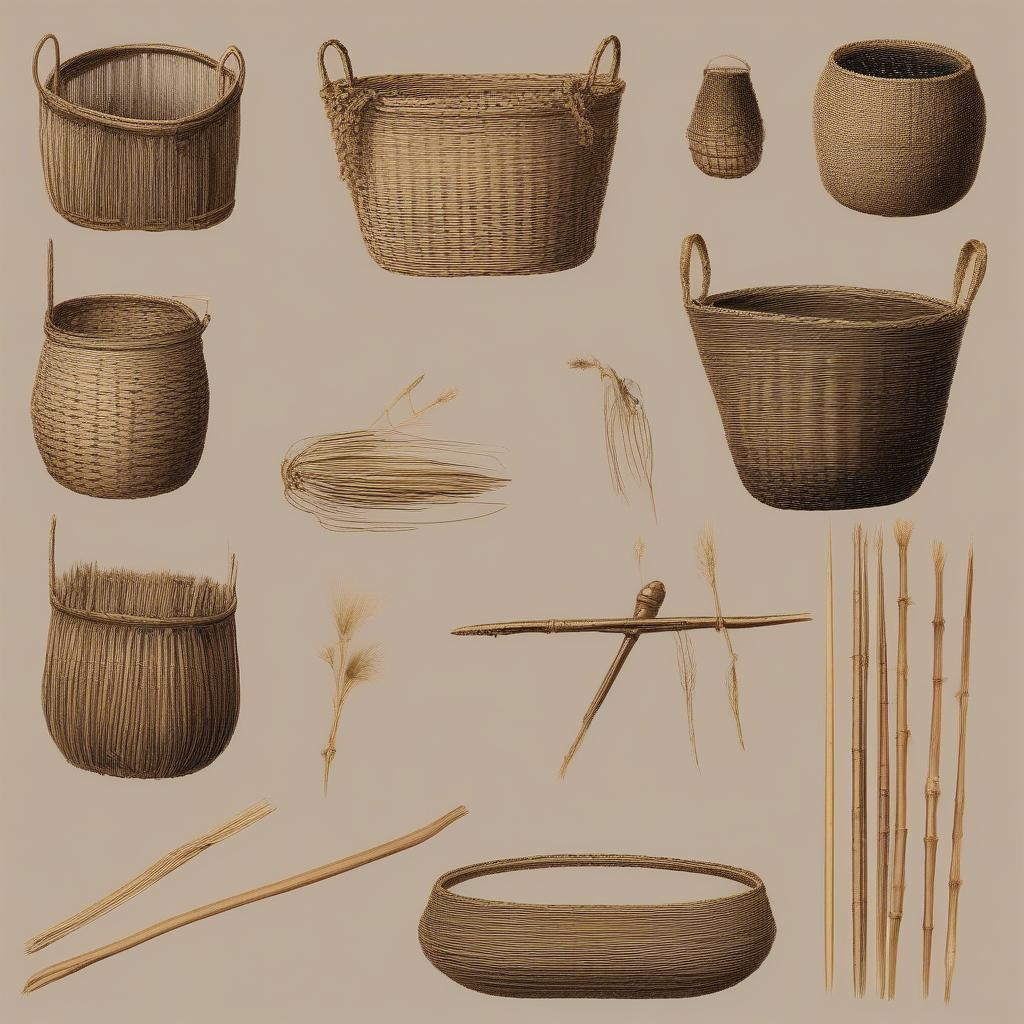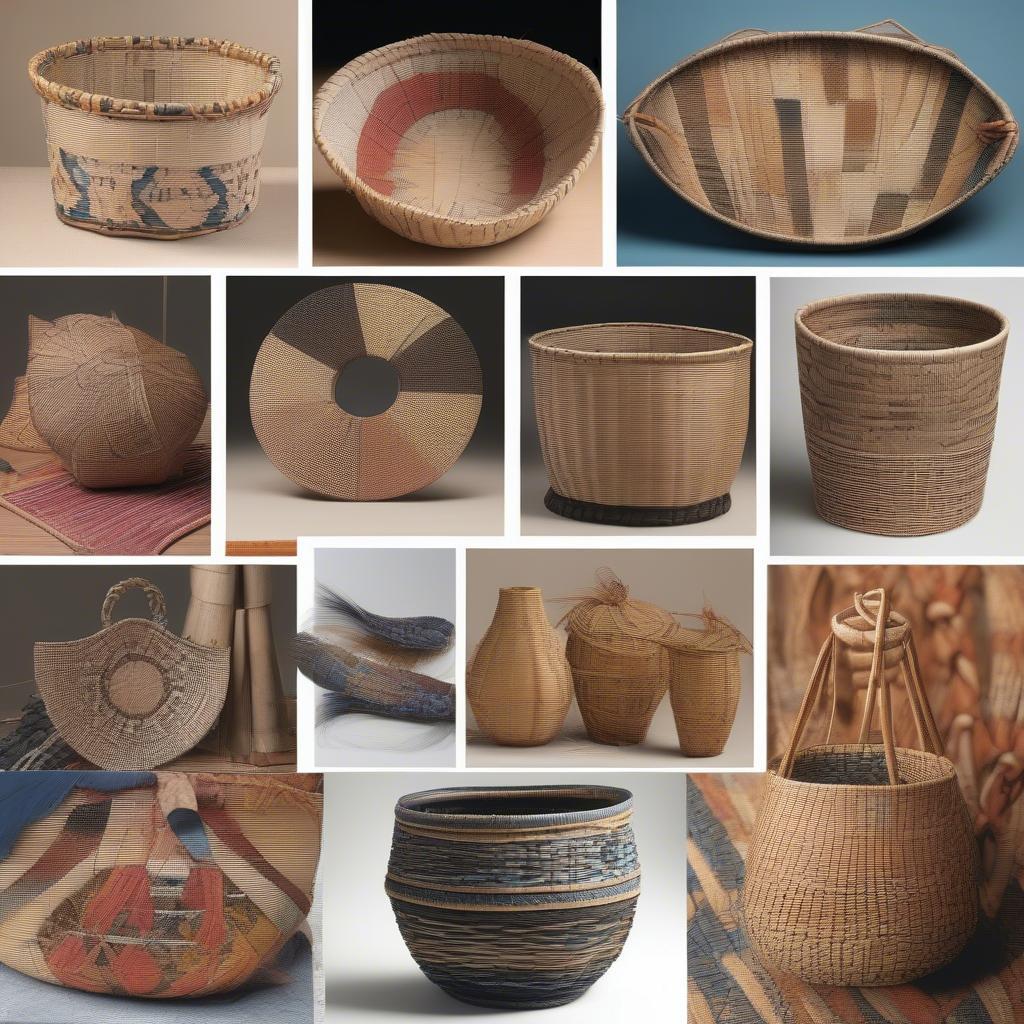Basket Weaving
When Were Woven Baskets Invented? A Deep Dive into History
Woven baskets, ubiquitous and seemingly simple, have a history far richer than many realize. When were woven baskets invented? The answer takes us back millennia, to a time long before recorded history, revealing a craft intrinsically linked to human survival and ingenuity.  Ancient Basket Weaving Techniques
Ancient Basket Weaving Techniques
Unraveling the Origins of Basket Weaving
Pinpointing the exact date of basketry’s invention is impossible. Organic materials decompose, leaving few traces for archaeologists to discover. However, fragmented remains and impressions left in clay offer glimpses into this ancient craft. Evidence suggests that basket weaving predates pottery, making it one of humanity’s oldest technologies. When was basket weaving invented? It’s a question with an answer shrouded in the mists of time.
Early Examples and Archaeological Discoveries
The oldest known basket fragment, discovered in the Nahal Hemar cave in Israel, dates back an astounding 10,500 years. This find provides compelling evidence that basket weaving was practiced even before the advent of agriculture. Other archaeological finds, including impressions of woven materials on clay tablets and fragments found in various parts of the world, further solidify the antiquity of this craft. These early baskets, likely constructed from readily available materials like reeds, grasses, and vines, served a variety of purposes, from food storage and transportation to cradles and even cooking vessels.
The Evolution of Basket Weaving Techniques
From its humble beginnings, basket weaving evolved alongside human civilizations. As societies became more complex, so too did their basketry. Different cultures developed unique techniques, styles, and uses for woven baskets, reflecting their environment, resources, and cultural beliefs. Who invented basket weave? While we can’t attribute the invention to a single individual, the collective ingenuity of countless generations has shaped this craft into what it is today.
From Functional to Artistic: The Expanding Role of Baskets
While functionality remained paramount, basket weaving also became a medium for artistic expression. Intricate patterns, vibrant dyes, and embellishments transformed baskets from utilitarian objects into works of art, reflecting the skill and creativity of their makers.  Global Basket Weaving Traditions
Global Basket Weaving Traditions
Basket Weaving in the Modern World
Even in today’s technologically advanced world, the art of basket weaving endures. From traditional craftspeople preserving ancestral techniques to contemporary artists pushing the boundaries of the medium, basketry continues to evolve. Weaving of basket remains a valued skill and a source of cultural pride in many communities.
The Continued Significance of Handmade Baskets
“Basket weaving is more than just a craft,” says renowned basket maker Anya Petrova. “It’s a connection to our past, a celebration of nature, and a testament to human creativity.” Indeed, the tactile nature of working with natural fibers, the rhythmic process of weaving, and the satisfaction of creating something beautiful and functional by hand continue to resonate with people across cultures.
“The beauty of a handmade basket lies not only in its aesthetic appeal but also in the story it tells,” adds Petrova. “Each basket is a unique expression of the maker’s skill, creativity, and connection to their heritage.”
The Future of Basketry
As we look to the future, basket weaving faces both challenges and opportunities. The increasing availability of mass-produced goods poses a threat to traditional craftspeople. However, there is also a growing appreciation for handmade items and a renewed interest in sustainable practices. This resurgence of interest, coupled with the adaptability of the craft itself, suggests a bright future for basket weaving.
Conclusion
When were woven baskets invented? The answer lies lost in the depths of prehistory, but the legacy of this ancient craft continues to shape our world. From the earliest functional containers to the intricate works of art created today, basket weaving stands as a testament to human ingenuity and our enduring relationship with the natural world. Basket weaving facts offer fascinating insights into this ancient craft and its enduring significance.
FAQ
- What materials are used in basket weaving?
- How long does it take to weave a basket?
- What are the different types of basket weaving?
- Where can I learn basket weaving?
- Are woven baskets environmentally friendly?
- What is the difference between wicker and rattan?
- How can I care for my woven baskets?
Situations Where You Might Ask “When Were Woven Baskets Invented?”
- Visiting a museum exhibit on ancient crafts
- Researching the history of a specific culture
- Studying the evolution of human technology
- Learning basket weaving yourself and wanting to understand its origins
Further Exploration
Check out our other articles on basket weaving:
If you need any assistance, please contact us at Hanoi, Vietnam or Tech Avenue, Suite 12, San Francisco, CA 94105, USA. We have a 24/7 customer service team available.
